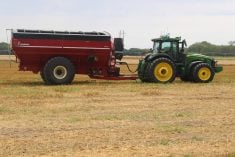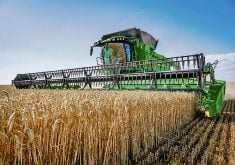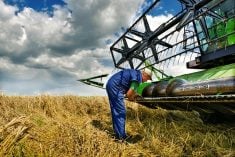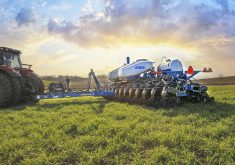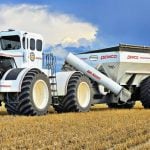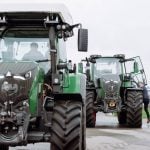Glacier FarmMedia – Farm equipment sales are down for Canada and United States, with Canada showing significant reductions from last year on the largest gear.
This year, four-wheel drive tractors and combines in Canada saw sales fall 22 per cent from last season at this time. American numbers were better, but followed the same trend, with four-wheel drive tractors off by six per cent and combines down two per cent.
“Combines were up last month (year over year in Canada) but down is the trend right now,” said Curt Blades of the Association of Equipment Manufacturers.
Read Also
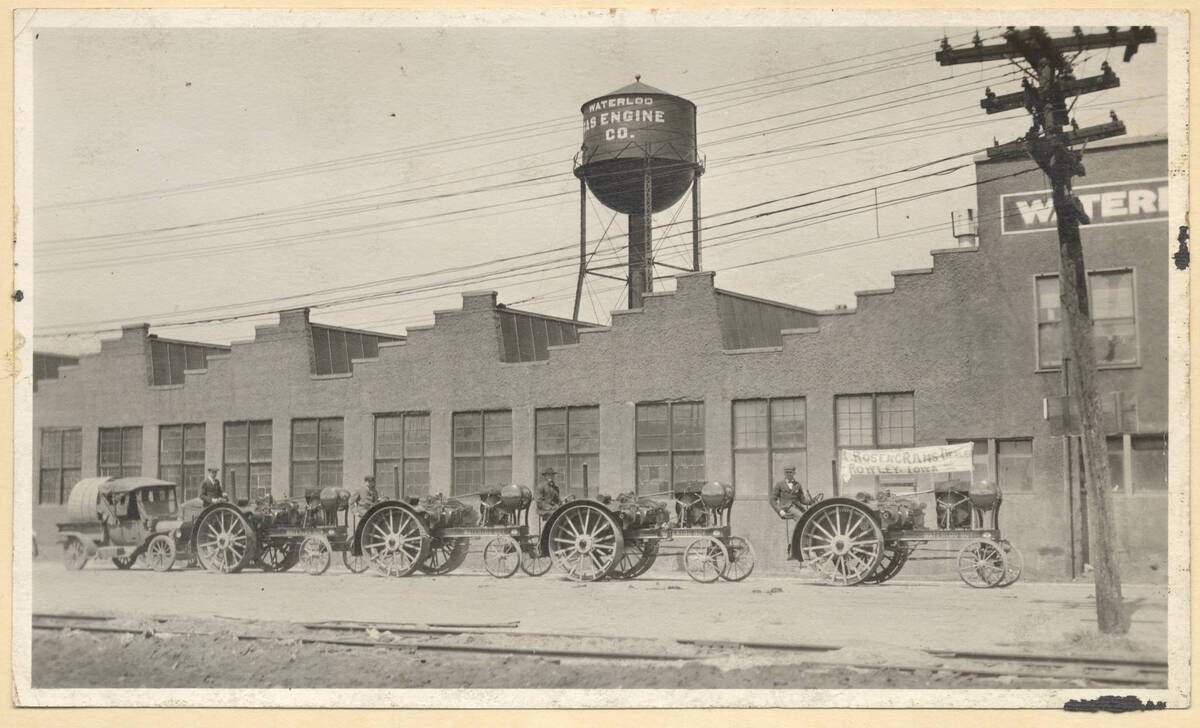
Could John Deere have imagined what his company has become today?
Let’s ask the company’s own archivist: would John Deere, the man, be surprised to learn his eponymous field plow company is now a global corporation with around US$30 billion in annual turnover?
“They are selling, but there are a lot of factors at play in a very unusual time for the farm equipment industry.”
Farmers, in many cases, are in positions to buy new equipment this year. High input costs are causing concern but higher commodity prices have given many producers in North America some optimism about the future and Blades said that has a big influence on sales.
“Trouble isn’t with demand. We have come off two years of white-hot demand. But the manufacturers have found themselves tested to be able to supply it,” he said.
“You might hear in the national news that the COVID-slowed supply chain issues are improving. Maybe up to 80 per cent. … But you need 100 per cent to deliver a tractor or combine. Eighty per cent won’t get it done.”
Dealers could sell more new equipment but their abilities to supply producers with the machines, especially in a timely way, are impeded by supply.
“It is a really strange situation and we are hearing more from Canadian companies, more than even the U.S. ones, that they are having a heck of a time getting what they need to build equipment,” said Blades.
“They are definitely speaking up about it and we hear them.”
Decisions to make large farm equipment purchases don’t come along often and missing out on profitable years is disappointing to manufacturers.
“A farmer, if lucky, gets 60 crops, 60 paycheques. Sixty chances to make a large buying decision and they don’t do that every year. But they buy parts every season and that is the current focus for some of our members – keeping farmers rolling,” he said.
“There is 40 years of equipment out there that is currently putting in and taking off the crops; keeping all those wear-parts ready to make that happen. The ability to deliver more new equipment will improve over time, but crops have to be grown now,” said Blades.
So far this year, Canadian farmers have purchased 728 new combines versus 934 last year. The four-wheel drive tractor market has seen 427 units delivered compared to 546 last year at this time.
American farmers bought 1,633 four-wheel drive tractors so far this year, down from 1,731 last year, while combine purchases were down just two per cent, with 2,865 this year and 2,930 last season.
Blades said many manufacturers take their role seriously in feeding the world. One recently told him that other sectors of the economy might be waiting to deliver on new technology and equipment, but “he said ag needs to be better. We as companies need to be better. He seemed pretty confident that they would get there and motivated to do it.”
Farm equipment components, and larger manufacturers, are global. Parts come from around the planet and companies have factories scattered across it as well.
Italy is one of the larger farm technology engineering and manufacturing hubs and it was one of the places COVID-19 hit hardest early in the pandemic. Lockdowns and worker shortages left manufacturers unable to complete new equipment orders.
“(Computer) chips are still a thing, but improving. But even if it wasn’t the components, we would still be talking about COVID’s effects on companies. It would be a labour story,” said Blades.
“Workers have made a lot of choices about retirement, about career changes. There are generational shifts, people looking for new work-life balances and the labour issues are piling up for manufacturers, like every other sector of the economy. It is a lot to work with all at once.”
Equipment companies have to remain competitive because farmers compete on a global basis for their commodities. The price of tools has to reflect economic realities, Blades said.
“And then there are new geo-political issues. Where a company can or will source things might have changed, where they might locate a plant. Long-term decisions are changing. Re-shoring needs to be considered and weighed against costs. (It’s) a challenging time for these companies.”
Back on the farm, it is harder for manufacturers to commit to prices for machines that haven’t been built yet, because everything from interest rates and labour costs to steel prices are in flux.
“In some cases, companies were absorbing some new costs, including basics like transportation. Many can’t ignore it anymore. Prices for new equipment are going to be rising. That is something that can be counted on for the most part,” said Blades.
– This article was originally published at The Western Producer.



